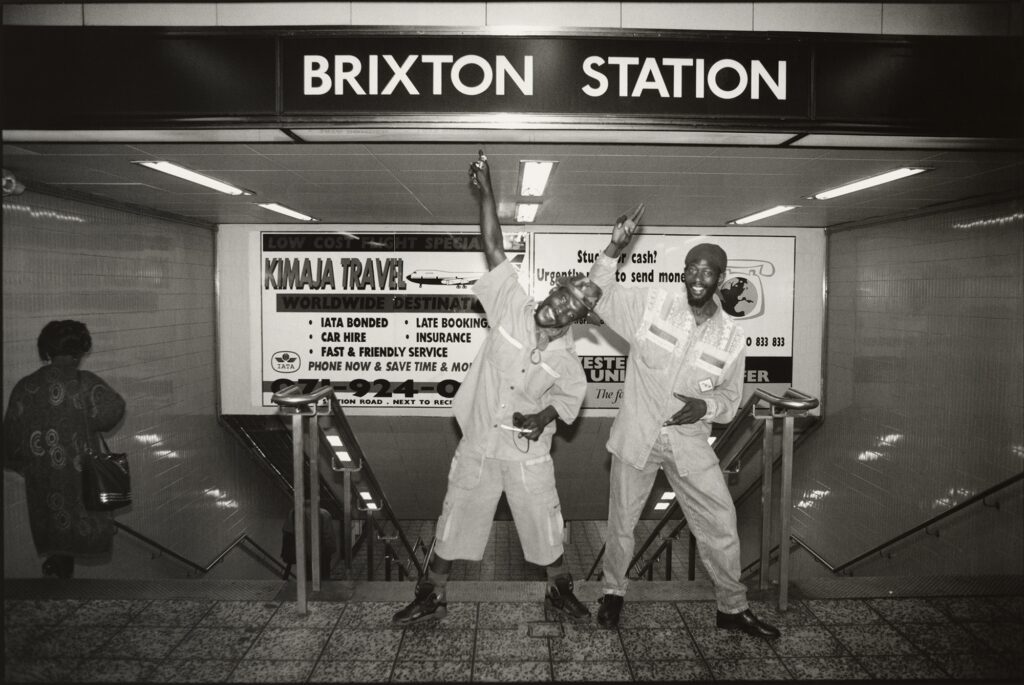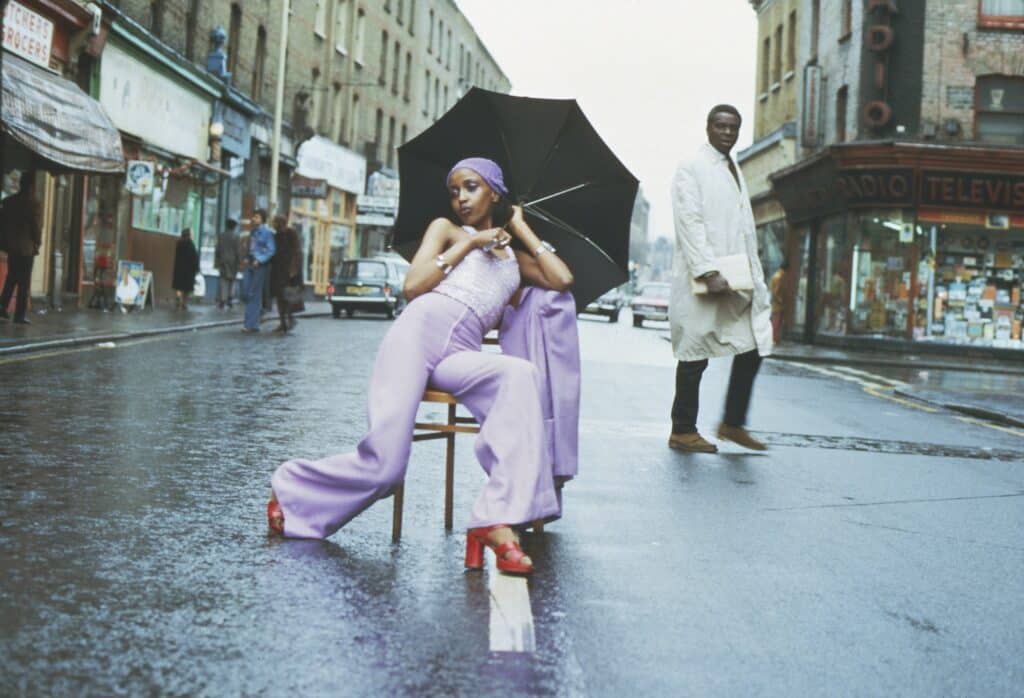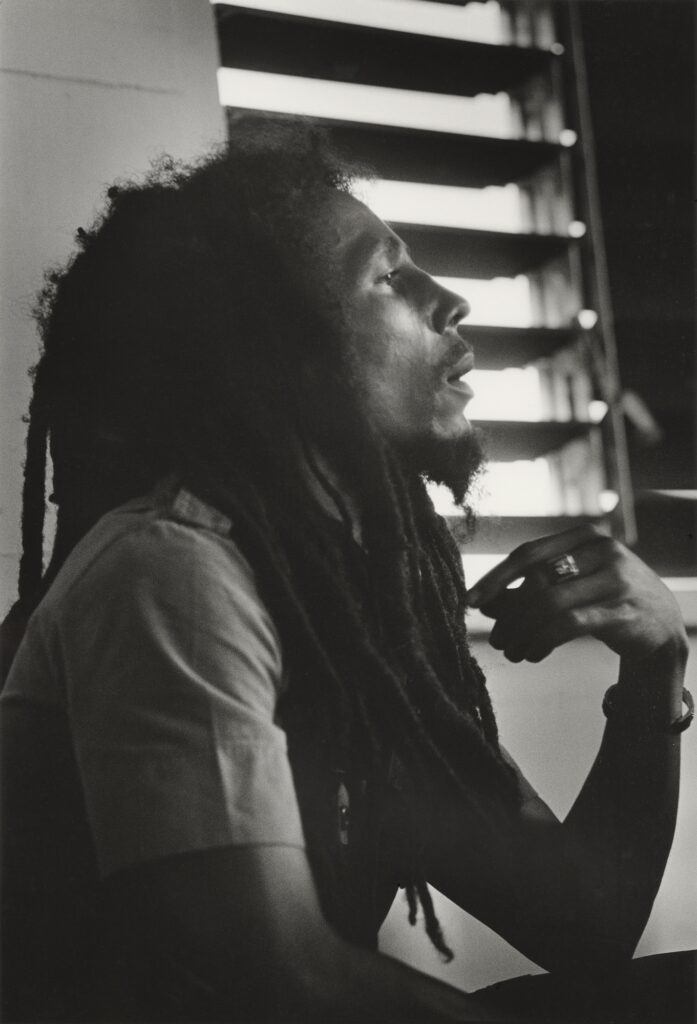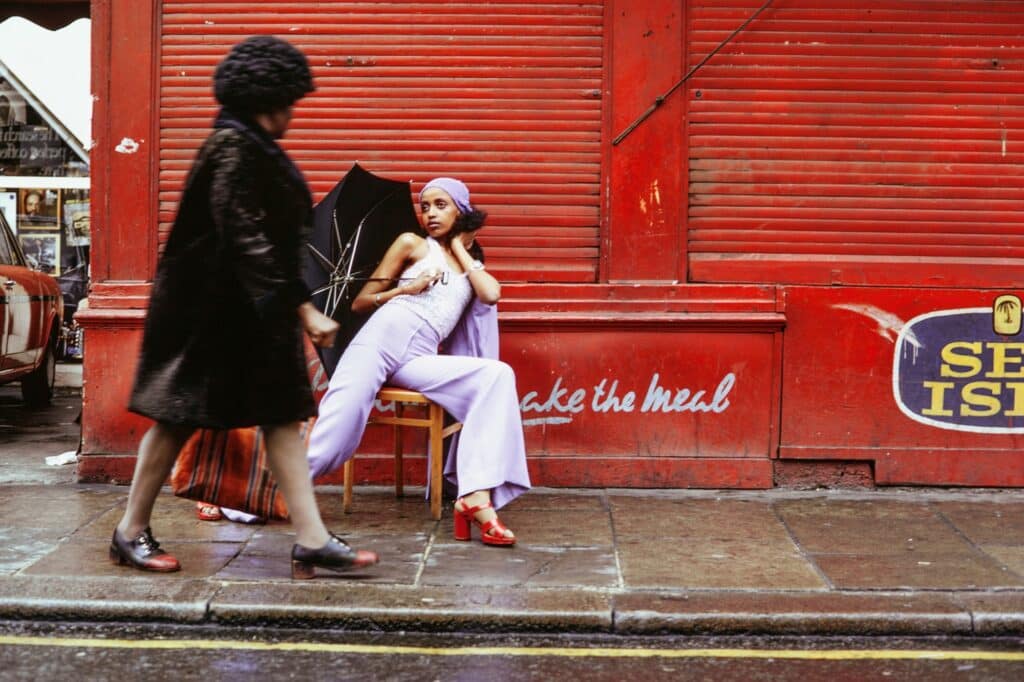In the 1955, Armet Francis, then 10 years old, moved from rural Jamaica to London during the first flush of the Windrush Generation. In the wake of World War II, Black men, women, and children from British colonies across the Caribbean sailed back across the Atlantic — this time of their own accord — to help rebuild the UK, which he been reduced to rubble and ruin during the infamous German Blitz.
Uprooted from his roots, Francis felt deeply displaced inside a crumbling empire that saw people of the Global South as “the white man’s burden.” He turned to photography to navigate this new world just as the African Independence and Civil Rights Movements of the 1960s centered Black Liberation and Pan-Africanism.

As the Swinging Sixties marked the reemergence of Britain two decades after the war, British fascism reasserted itself in 1967 with National Front, a political party that devoted itself to stripping Black and Asian Brits of their citizenship. Against this backdrop of systemic racism and xenophobia, Francis developed “The Black Triangle,” a series of that emerged from his profound need to discover the multi-dimensional experiences of Black people across the diaspora.
Francis envisioned the work as a triangle between Africa, the Americas and Europe, one he and so many others have traveled over the past 500 years as an extension of the slave trade and later neocolonialism.“During slavery they never told you where you came from and after a few generations everyone forgot,” says Francis, who spent 14 years on this extraordinary body of social documentary work.
In 1983, he exhibited the work at The Photographers’ Gallery in London, becoming the first Black photographer to have a solo show at nation’s premier gallery. Five years later Francus co-founded the Association of Black Photographers (now Autograph ABP).
Now, the groundbreaking photographer comes full circle, returning to where it all began with the new exhibition, Armet Francis: Beyond the Black Triangle. The show maps Francis’s journey through photography over 40 years, tracing the threads that weave together sparkling scenes across the diaspora into a multi-layered tapestry of Black beauty, creativity, innovation, and majesty.
Life Between Islands
Born in Saint Elizabeth Parish, Jamaica in 1945, Armet Francis was just three years old when his parents moved to London in the hopes of making a better life. Left in the care of his grandparents, Francis spent his formative years among Jamaicans descended from a mix of Irish and Scottish, African, Chinese and Indian peoples in a self-sustaining community of the Santa Cruz Mountains.




Francis remembers his first encounter with photography at the age of five, when his mother sent a photographer to create a portrait of her son and parents as a keepsake until he would later arrive. “When I first got to England, I saw the photography on the mantelpiece and thought photography was magic,” he remembers.
As the only Black student at his school, Francis encountered the harrowing realities of racism for the first time. Here, in the dark heart of Empire he faced the cruel brutality of white supremacy already deeply instilled in his young classmates. At age 14, Francis left school for good and later got a job as an assistant at a commercial photo studio in the West End before launching his photography career shooting fashion and advertising work.
Portrait of the Artist as a Young Man
From the outset, Armet Francis showed care and daring few possessed, creating Self-portrait in a Mirror, an intimate portrait of himself and a young white woman alone together in domestic interior in 1964. Just 19 years old, he fearlessly confronted the taboo of interracial relationships in the UK, heralding the emergence of a new generation unafraid of confronting the issue of race.




As one of the few professional Black photographers of the era, Francis forged his own path alongside contemporaries including James Barnor, Neil Kenlock, Charlie Phillips, Dennis Morris, and Raphael Albert.
Although the winds of change were in the air, the fashion industry remained a deeply exclusionary world throughout the 1960s. Recognizing the only way to tells stories of Black life was to do it on his own terms, Francis embarked on a series of his own projects beginning with The Black Triangle. It was a path he would literally and figuratively carve out for himself.
In 1969, Francis embarked on a three-week trip by boat, traveling across the Atlantic Ocean and returning to Jamaica for the first time since he left. He knew little of the island other than what he had lived as a child, and set forth on a journey of rediscovery.
“A Sophisticated Mirror”
In the 1970s, Armet Francis began staging outdoor fashion shoots at Brixton Market, creating a captivating series that elevates expressions of Black beauty, joy, style, and innovation.
Subverting the stale trope of white models posing for fashion photos amidst the African plains, Francis transformed the streets of London into a plein air studio featuring Black models. Working without an assistant, he set up a chair in the middle of the street for impromptu shots, while models prepped in a nearby van, which are just as fresh an inspiring now as they day they were made.
“Photography is a sophisticated mirror of the time, space, and motion,” Francis says. “I’ve learned a lot from the photographs that I have taken and as I’ve grown older I am looking at people who are now dead. But once you’ve taken that photograph, it stays there. It doesn’t change, but you change.”




Armet Francis: Beyond the Black Triangle is on view through January 20, 2024, at Autograph in London.
This post was originally published on this site be sure to check out more of their content.












